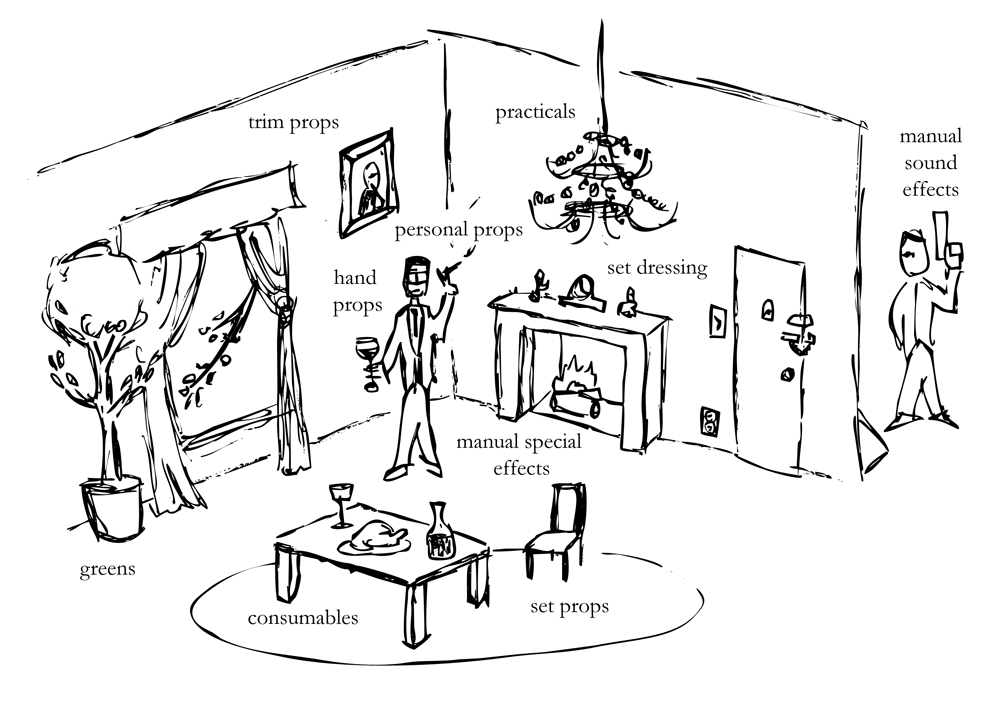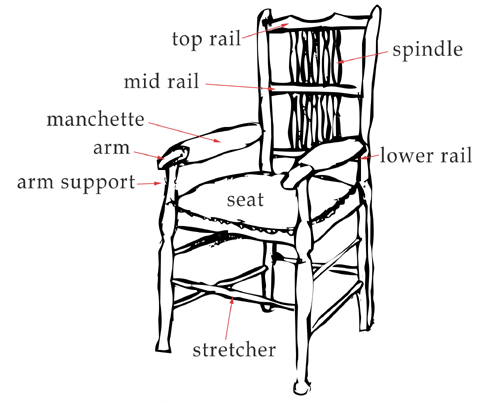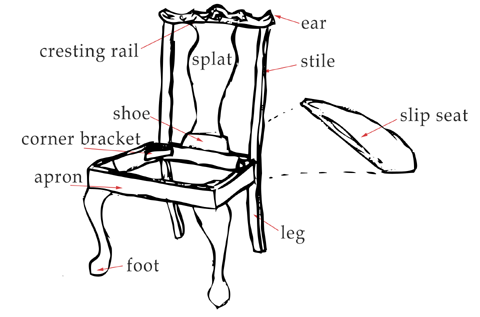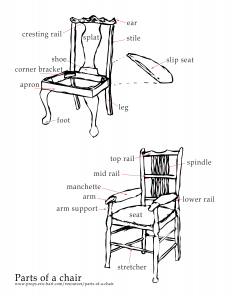
I’ve made a diagram to better illustrate the various types of props. My listing of the categories of props will better define all the terms used in the picture above.

I’ve made a diagram to better illustrate the various types of props. My listing of the categories of props will better define all the terms used in the picture above.
There is no such thing as a generic or universal sword, thus no single drawing can encapsulate all the possible parts and various names for them. The diagram I made here is based off a Renaissance-style rapier, which is what many of us traditionally keep in our stock and use for stage combat. Interestingly, swords in all time-periods and cultures share at least three basic parts: the blade, the pommel, and the grip.

Button – Also known as a pommel nut, pommel bolt, capstan rivet, or tang nut. In some swords, the button is screwed on to the end of the tang to hold the grip on.
Pommel – The counter-weight at the end of the grip.
Grip – Handle
Tang – The hidden part of the blade which the grip is mounted to.
Shoulder – The corner portion where the tang and the blade meet.
Guard – A blanket term for all the parts that protect the hand.
Quillon – Extended portions of the guard.
Écusson – or quillon block. The metal center where the quillons meet and all parts of the guard attach to.
Ricasso – Unsharpened portion of the blade which extends from the grip to the end of the guard.
Learning the names and terms for parts of objects is important in developing your shared vocabulary for easier communication. If a designer asks you to “make the splat wider”, you don’t want to waste your time trying to widen a drop of paint.
For chairs, this was a little tricky trying to distill down all the general parts. Not all chairs have all the parts. Some parts are only specific to certain styles or time periods. Various people refer to similar parts by different names; in some contexts, they can be synonyms, while in others, they might have slightly different definitions. I’ve tried to exclude terminology which describes styles of parts. So while I defined a “leg”, I haven’t included a “cabriole leg”.

You can refer to the drawing above as well as the one below when looking at the definitions. At the end of today’s post, I’ve included a full-size drawing of both diagrams together at a higher resolution so you can print it out and hang it up. Have fun!

